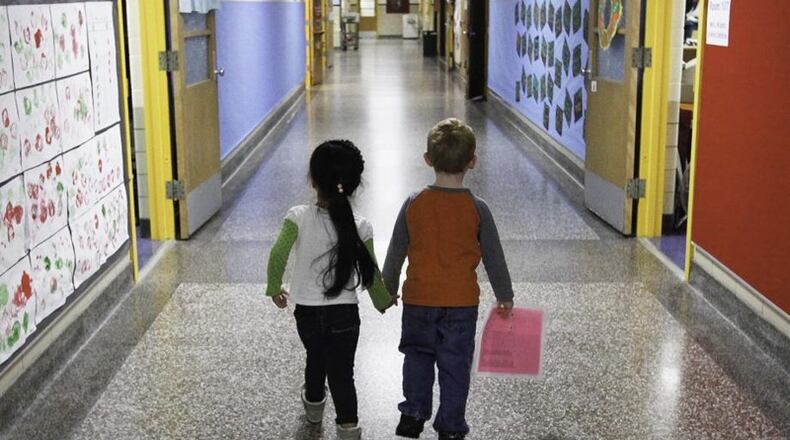Preschool Promise this year will work to find better ways to reach families in those areas and figure out what kinds of preschool offerings are needed to get more kids enrolled, said Robyn Lightcap, executive director of Dayton-Montgomery County Preschool Promise.
“This is a big focus for us,” she said.
MORE: Preschool Promise expanding to 3 more communities
More than three years ago, Dayton voters approved increasing the city’s income tax, in part to help pay for universal, high-quality preschool.
The additional 0.25% earnings tax, which expires after eight years, is expected to generate about $13.1 million this year, with Preschool Promise receiving about $4.3 million of that money.
Preschool Promise helps expand high-quality preschool options in Dayton and Montgomery County and assists families in finding and paying for early education.
Dayton saw a 7-percentage-point increase in Preschool Promise participation between the 2017-18 school year and the 2018-19 school year, which is the most recent data available, Lightcap said.
In the 2017-18 school year, about 55% of 4-year-old children living in the city of Dayton attended Preschool Promise sites, officials said.
In the 2018-19, that increased to about 59% of children living in the city, or 67 more kids, program data show.
MORE: Preschool Promise cites success, ‘much more work still to do’
Gains have been seen in every part of the city, but they have not happened evenly across Dayton.
About 85% of 4-year-olds living in the north central part of Dayton are attending Preschool Promise, while southwest Dayton has about 84% of that population attending.
But in southeast Dayton, 54% of the 4-year-old population is attending. In northeast, it’s 34%.
“This continues to bug us in east Dayton, because we’re not doing enough here,” Lightcap said.
Some families in northeast Dayton might be sending their children to providers in Huber Heights, but southeast Dayton does not yet seem to have the right kinds of offerings to meet the need, she said.
Lightcap said they opened an additional classroom at Immaculate Conception School on Smithville Road in southeast Dayton but struggled to fill it.
MORE: Preschool Promise expands sites, doubles quality training
She said she thinks what’s available may not be the right fit for families. She said they will look at barriers that might prevent families from enrolling their children, like insufficient hours, schedules and location.
She said there will be increased outreach to try to connect and serve families in eastern neighborhoods.
East Dayton is home to a significant number of immigrant families and refugees. Old North Dayton, located in the northeast part of the city, has a large Ahiska Turkish population.
More work is needed get immigrant families to participate, but every segment of the community is different and has unique needs and challenges, including language barriers, said Charmaine Webster, director of marketing for Preschool Promise.
Local officials say Preschool Promise is making a difference in helping young kids get ready for school.
In the 2018-19 school year, about 32.1% of Dayton public school students who attended Preschool Promise-affiliated sites demonstrated readiness when they were tested as they entered kindergarten, compared to about 20.5% of Dayton school students who were not enrolled in the program, said Lightcap.
MORE: Preschool Promise expanding in and around Dayton
“Fifty-seven percent more students are meeting that highest level of kindergarten readiness assessment, which is really significant,” Lightcap said at a recent Dayton commission meeting.
Class scores are rising in the three assessment areas, teachers are making improvements that benefit child outcomes and about 22 providers increased their star rating in 2018-19 and 53 maintained their ratings, she said.
About 54% of Preschool Promise children entering kindergarten in Dayton passed language and literacy sub-tests, while only 35% of children who were not enrolled achieved that, Lightcap said.
“Our data is affirming that our Preschool Promise sites are making an impact,” she said.
About the Author

